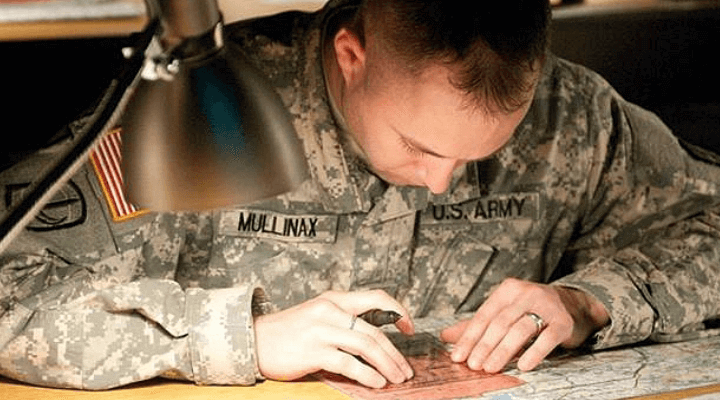As the Second World War waged on, the 78th United States Congress passed the Servicemen’s Readjustment Act of 1944. It was signed into law by President Franklin D. Roosevelt on June 22, 1944. While the original “G.I.” – as it was also known – expired in 1956 – the term has been used to refer to subsequent programs created to assist U.S. military veterans. The actual G.I. Bill was designed by the American Legion to provide rewards to all World War II veterans.
Politicians wanted to avoid any postwar confusion about veterans’ benefits, as such topics had become highly controversial in the years following the First World War. Benefits to those men serving in uniform was a bipartisan issue, and Harry W. Colmery, Republican National Committee chairman and former National Commander of The American Legion, has been credited with writing the first draft of the G.I. Bill. According to legend, he wrote up the original ideas on a napkin – and perhaps stationery – from the Mayflower Hotel in Washington, D.C.
U.S. Senator Ernest McFarland (D-Ariz.) and Warren Atherton, National Command of The American Legion, were highly involved in the bill’s passage and have been dubbed the “fathers of the G.I. Bill.” Rep. Edith Nourse Rogers (R-Mass.) also helped write and co-sponsored the legislation, and has been sometimes dubbed the “mother of the G.I Bill.”
Benefits were to include low-cost mortgages, low-interest loans to start a business, a year of unemployment compensation and notably education payments that included tuition and living expenses to attend school. While this is largely thought of as a college aid program, it was intended to cover expenses for high school, college or even vocational school. The benefits were available to all veterans who had been on active duty during the war years for at least 90 days and who had not been dishonorably discharged.
The G.I. Bill that President Roosevelt had in mind was a bit different – one that had a means test, so that only poor veterans would get one year of funding, and only top-scorers on a written exam would get the full four years of paid college. What the American Legion proposed was full benefits for all veterans, and this included women and minorities, regardless of their wealth.
Sadly, one group who served the country during the Second World War was left out: those who were in the Merchant Marine, which played a crucial role in delivering material around the world. While they were considered military personnel in times of war in accordance to the Merchant Marine Act of 1936, the Merchant Marine were not one of the branches of service. President Roosevelt did call upon Congress to provide similar benefits to members of the Merchant Marine, but none came to pass. In 2007, three different bills to address the issue were finally introduced in Congress, but only one passed in the House of Representatives.
The Legacy of the G.I. Bill
On Wednesday the The U.S. Chamber of Commerce Foundation in collaboration with Student Veterans of America (SVA) hosted “Pathway to Prosperity,” a half-day event that celebrated the 75th anniversary of the signing of the Servicemen’s Readjustment Act of 1944. The event examined the history and advancement of the G.I. Bill as well as its past, present and future impact on the American business community.
What had been originally designed to suspend service members from the labor market to allow industries time to adjust to the returning workforce has continued to shape America’s socioeconomic landscape. It has helped millions of veterans earn college degrees, obtain vocational training, support young families, and purchase homes, farms, and businesses.
Throughout its evolution from the Montgomery GI Bill to the Post-9/11 Veterans Educational Assistance Act to the Forever GI Bill, it has also propelled generations of veterans and their families to economic success.
This week the American Legion and the SVA also hosted an event in the Rayburn Room at the U.S. Capitol to mark the G.I. Bill’s 75th anniversary. The pen used by President Roosevelt to sign the original bill was on display at the reception, which was attended by Rep. Phil Roe (R-Tenn.), ranking of member of the House Committee on Veterans’ Affairs, Speaker of the House Nancy Pelosi (D-Calif.) and President and CEO of the SVA Jared Lyon.
House and Senate leaders, including Chairman Mark Takano (D-Cali.) and Ranking Member Dr. Phil Roe, M.D. (R-Tenn.) of the House Committee on Veterans’ Affairs, along with Sen. Tom Carper (D-Del.), Sen. Johnny Isakson (R-Ga.), and Sen. Jon Tester (D-Mont.), Chairman and Ranking Member of the Senate Committee on Veterans’ Affairs introduced a resolution to commemorate the milestone anniversary.
The lawmakers called for this week to be designated as “National G.I. Bill Commemoration Weeks” and released a joint statement:
“We strongly support our student veterans and are honored to introduce this resolution in recognition of the 75th anniversary of the G.I. Bill on their behalf. Since its creation in 1944, the G.I. Bill has helped millions of veterans go to school, buy a house, and achieve their dreams. In turn, those veterans have had a transformational effect on our workforce and economy. And now, even more servicemembers, veterans, dependents, and survivors are benefiting from the Forever G.I. Bill signed in 2017. The Forever G.I. Bill is one of the largest expansions of G.I. Bill benefits since its creation 75 years ago and ensures that veterans can use the educational benefits they’ve earned whenever they choose. We are so grateful for the sacrifices our servicemembers make and acknowledge the incredible impact the G.I. Bill has had on the veteran community and our entire nation for the past 75 years.”




